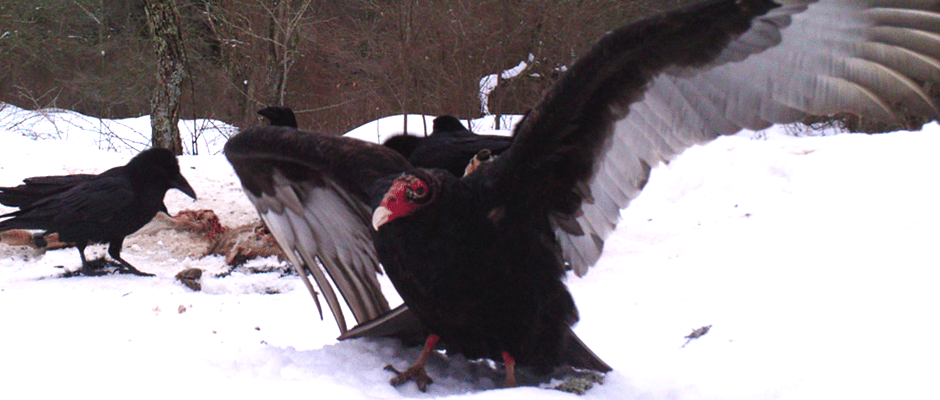Share this article
Wild Cam: Massive Study Reveals Raptor Ranges
A massive camera trap project is revealing range data on eagles, hawks, vultures and other birds of prey.
The AppalachianEagles project has generated over 3 million photos so far from 240 camera traps ranging from Maine to Florida, and west to Michigan and Arkansas.
“The fundamental role of this monitoring is just to be able to track what’s out there,” said Todd Katzner, a research wildlife biologist at the Forest and Rangeland Ecosystem Science Center of the U.S. Geological Survey and a coauthor of a study released recently in the Wildlife Society Bulletin.
Many of the camera traps used in the extensive network about raptors and other wildlife were run by volunteers. To get the shots highlighted in the newest Wild Cam photo essay, they would often pick up white-tailed deer (Odocoileus virginianus) killed on roads and dump the carcasses at the bait stations.
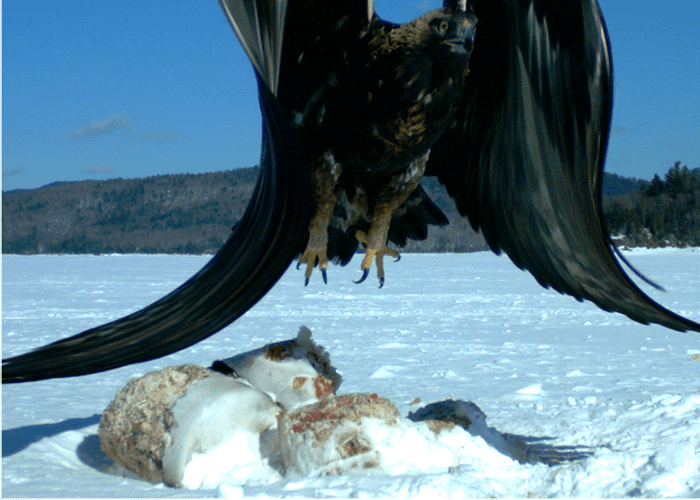
Image Credit: AppalachainEagles.org
When the project started, researchers were just trying to track the range of golden eagles (Aquila chrysaetos), said Katzner, who published research earlier this year on tracking the raptors’ migration routes (see related TWS article). But they quickly figured out that the camera traps they set presented an opportunity to look at all kinds of raptors, and even other wildlife.
This eagle is taking off from a bait site in Maine, which Katzner said “supported the last known breeding eagles in eastern North America.”
“As recently as 1997 these birds were on territory and trying to produce nestlings.”
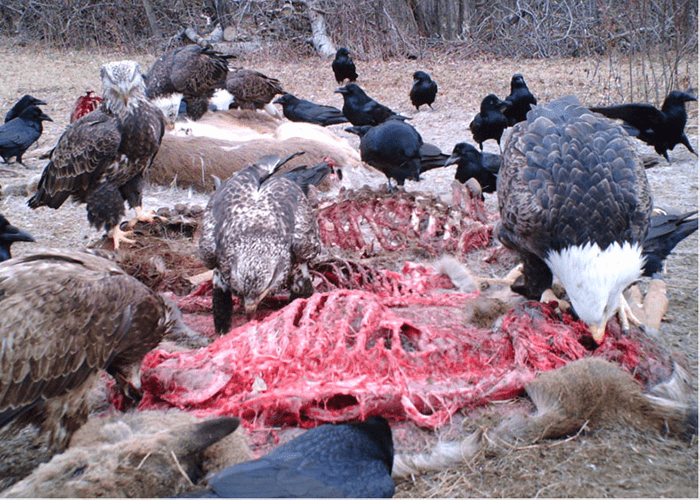
Image Credit: AppalachainEagles.org
A veritable feeding frenzy of bald eagles (Haliaeetus leucocephalus) and ravens (Genus corvus) in rural New York state. Bald eagles have increased their range dramatically across eastern North America, while ravens have recently come into some trouble from disease over the past two decades. “If we had been running this program during the West Nile outbreak we would have seen huge changes in the numbers of crows and ravens on the landscape,” Katzner said.
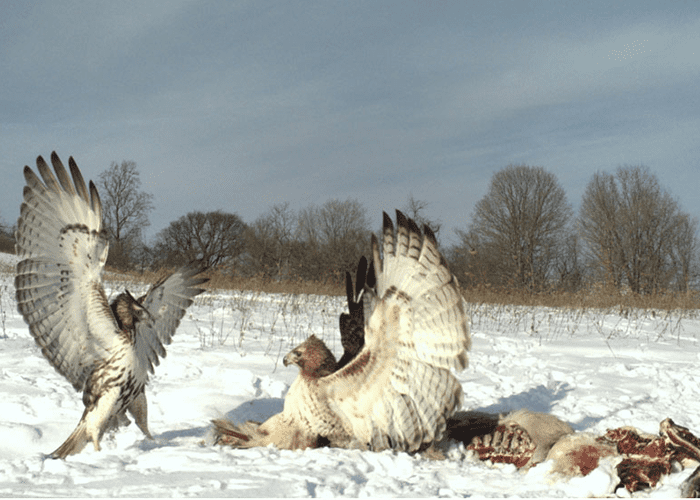
Image Credit: AppalachainEagles.org
Two red-tailed hawks (Buteo jamaicensis) in Pennsylvania show that there is never enough deer carcass to go around. “Red-tails are abundant and widespread in the east and these adaptable species are often found breeding in suburban backyards,” Katzner said.
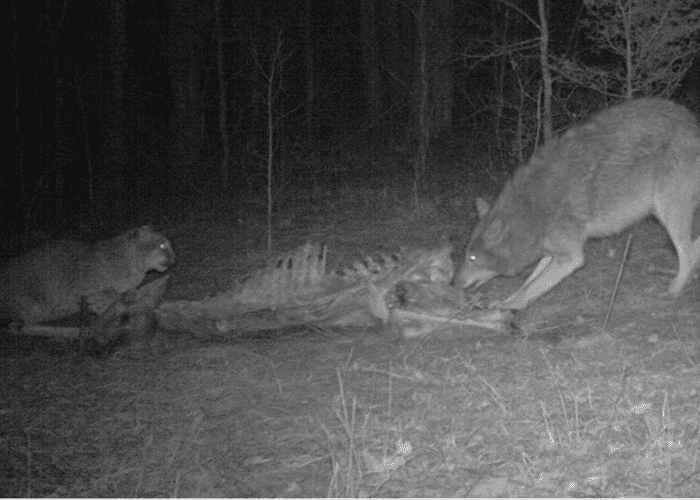
Image Credit: AppalachainEagles.org
But sometimes a feast is a feast, bringing a rare tolerance between predators like a bobcat (Lynx rufus) and coyote (Canis latrans) in West Virginia. “These two predators try to avoid each other but will tolerate each other when food supplies are plentiful,” Katzner said.
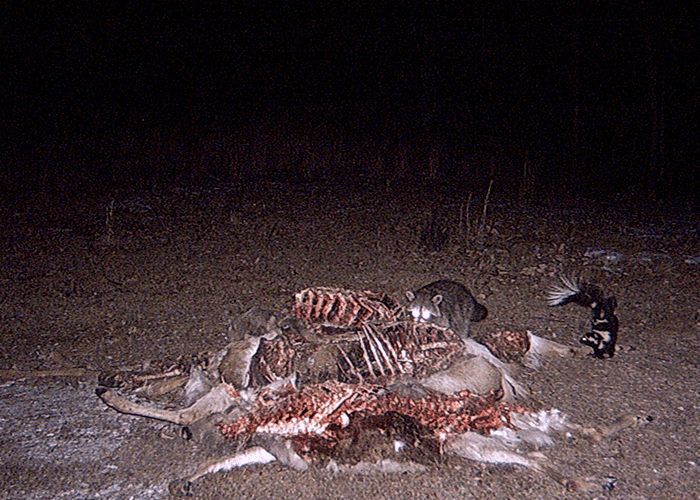
Image Credit: AppalachainEagles.org
“Spotted skunks (Spilogale putorius) always spray over their head like this and the spray usually has dramatic consequences for the target,” said Katzner. While this photo was taken at a bait site in West Virginia, camera traps snapped photos of the animals in Pennsylvania, which hadn’t been seen in the state since the early 1950s before 2012. “This skunk won his battle with the raccoon (Procyon lotor),” Katzner said.
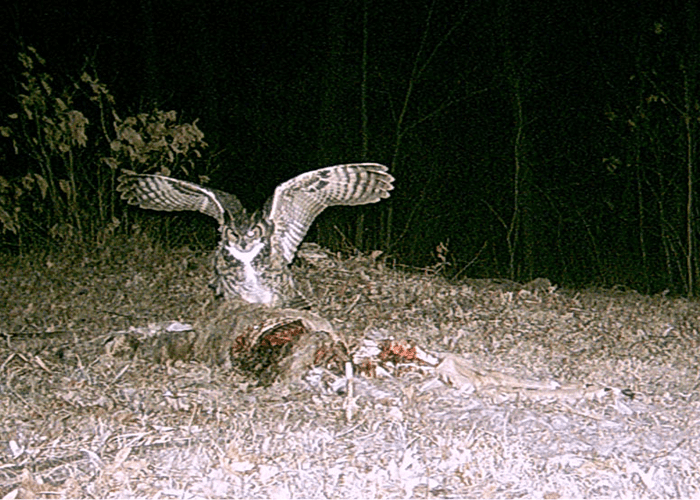
Image Credit: AppalachainEagles.org
Rural Ohio provides a grand place for a great horned owl (Bubo virginianus) to scavenge a meal. “Great horned owls were once thought not to scavenge; our camera trapping data show otherwise,” Katzner said.
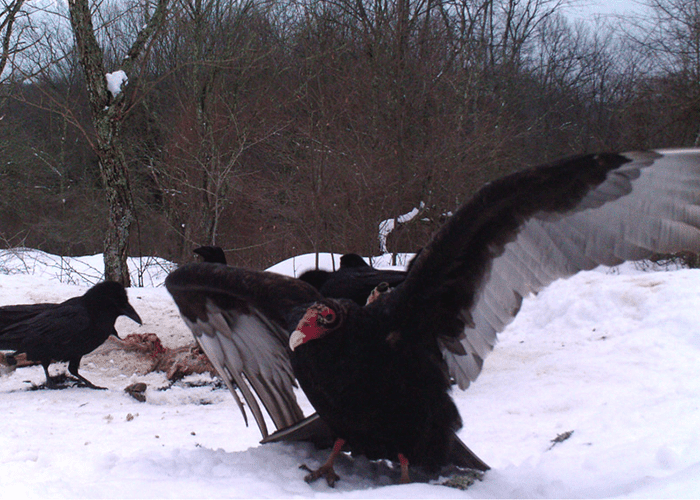
Image Credit: AppalachainEagles.org
Turkey vultures, on the other hand, have seldom been described as having gourmet taste buds. While many of the raptors migrate, turkey vultures like this one tough out the winter in West Virginia and surrounding states around if there’s enough food to go around.

Image Credit: AppalachainEagles.org
A bear and ravens share a moment over a fetid meal in rural Pennsylvania. The ear tag shows the bear is part of other long-term research. “Given that the picture was taken in March, this might be one of this bear’s first post-hibernation meals,” Katzner said.
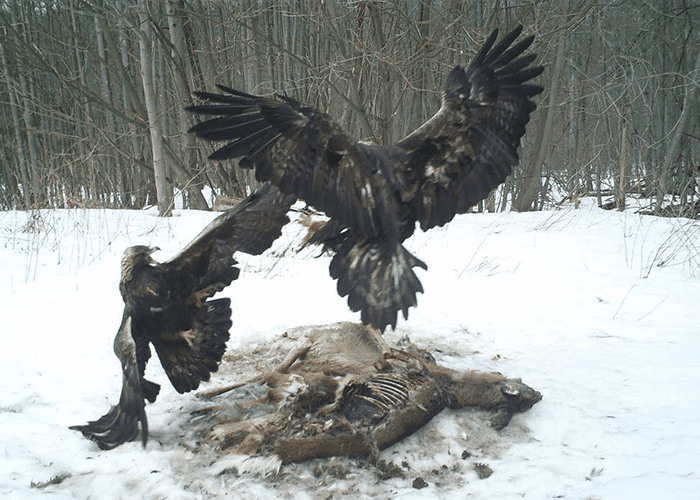
Image Credit: AppalachainEagles.org
Golden eagles fight in rural Pennsylvania. “We are fundamentally interested in golden eagles because that’s where a lot of our funding comes in,” Katzner said. As the AppalacianEagles program continues, he believes a great number of other studies will spin off from the data they are receiving. On top of this, the range of the project is expanding.
“We’re going to get some in Oklahoma this year,” he said. “We’re trying to take over the world.”
This photo essay is part of an ongoing series from The Wildlife Society featuring photos and video images of wildlife taken with camera traps. Check out other entries in the series here. If you’re working on an interesting camera trap research project and have photos you’d like to share, email Joshua at jlearn@wildlife.org.
Header Image: Turkey vultures. Image Credit: AppalachainEagles.org



